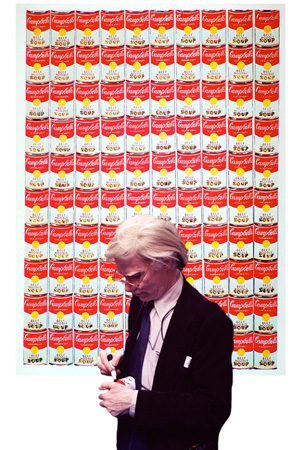
(Pop artist Andy Warhol signs a can of Campell’s tomoato soup. The owner should act now- the shelf life of the can is finite, much like pop art itself. Photo New York Times.)
I will not trouble you tales of mayonnaise this morning. The weather is too delightful to worry about the ingredients in a creamy, oil-and-egg-based condiment. But I have been thinking about spices and food, since some of the contents of the pantry from the old unit are still in the garage at the farm, and they are one of the things I will have to deal with now that there is the prospect of having the time to actually get organized.
I think it is prudent to have some canned goods and dried foods put aside in case of natural or man-made disaster- it is only prudent, right? I agree with the Latter Day Saints on that score. But there are some things- that thick can of baby oysters, for example- that I think date to 2002.
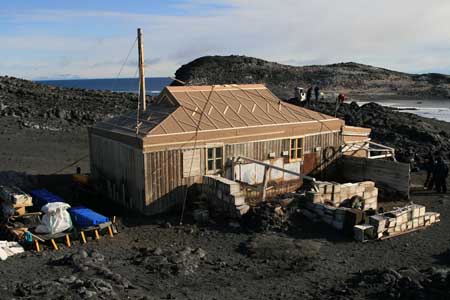
(Polar explorer Earnest Shackleton’s historic 1908 hut at Cape Royd.)
In Earnest Shackleton’s historic 1908 hut at Cape Royds on Ross Island in Antarctica, some of the original tinned food is still present from the long-ago expedition, and possibly still edible. I shudder a bit at the idea, but there is a lot to shudder about if you think of food. I will get to the connection in a minute.
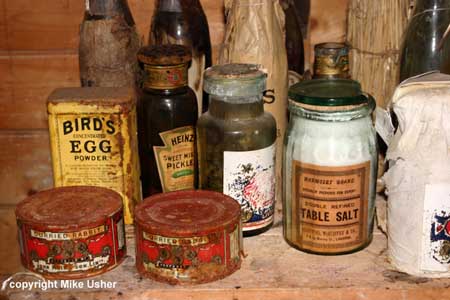
(Shackleton’s pantry today. Photo courtesy Mike Usher).
I sort of wandered off from the rich creamy taste of mayo and into the world of Big Corn yesterday, and dragged some of you with enough sense of whimsy along with me. I got a note from the Argonaut about a life-transforming book regarding corn- and I only managed to scrape the surface of that tasty vegetable- the husk of it, if you will.
So not only does Big Corn make us fat, drive up food prices in the Third World, provide a wasteful diversion of energy while simultaneously corroding our automobiles, it has infiltrated virtually everything we eat all up and down the food chain. It is frankly more than a little terrifying. Try a read of author Michael Pollen in his book “The Omnivore’s Dilemma.”
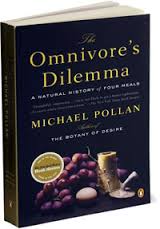
I bought it on Amazon in the Kindle version- though perhaps I should start examining my relationship with the merchandizing giant in light of founder Jeff Bezos’ recent purchase of the Washington Post. That is a food of thought chain with which I prefer not to be associated. But I digress.
In his book, Pollan identifies the industrial mechanism that created the modern food chain, and what is available for us to purchase and ingest at the Harris Teeter, or Kroger, or whatever industrial mechanism that brings sustenance to our tables.
Pollan thinks that the groups of food- industrial, organic or alternative food, are largely based on corn. The stuff from the meat case? Beef, chicken or pork: all those animals were fed on corn. Corn is the root of all of it: the evil High Fructose Syrup that sweetens everything, the organic material from the plant that is stripped and recombined into the packaging and materials to construct the store itself.
It is mind-blowing to consider how dependent we are on corn.
I am partly out of that chain, thanks to the earnest efforts of the Russians next door. They did not put in corn this year, and the bounty of their truck patch is such that I leave the place each week with so many cucumbers, tomatoes, melons and peppers that I myself have to give them away before they go bad.
They are nutritious and fresh beyond belief. Last night, after a refreshing swim and an even more refreshing vodka, I sautéed them all with some store-bought mushrooms and onions and threw a last item in the microwave.
An ear of corn. It was relatively fresh, and thoroughly delicious. But I confess, I looked at the cob this morning where it sat on the dish that I did not clean before bed with suspicion.
Read the book. You are never going to look at dinner the same way you did before.
I think, on the whole, that mooching off the Russians when the harvest comes in is an acceptable option for now. But what happens if the food chain is interrupted? I am not much of a survivalist, but like I say, having a stock of edible food seems only rational these days. Having had a can of pineapples explode in my cupboard a couple years ago (I was reminded when I had to clean the top shelf of the pantry last week before selling the place) just how safe all that stuff was.
You know, the “best before” date stamped on the can? I saw some that were issued before my last passport expired. I checked up on it.
Beyond the Antarctic expeditions, there is domestic evidence of how long the cans can last.
The steamboat Bertrand, under the command of Captain James Yore, was carrying cargo up the Missouri River to Virginia City, Montana Territory in 1865 when it went down after hitting a submerged log in the Desoto Bend. The wreck stayed on the bottom for over a hundred years before it was salvaged, and its cargo included everything a Civil War-era frontier community desired- including canned goods.
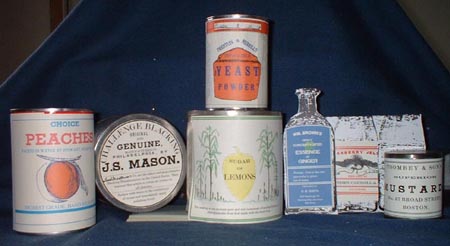
(Cargo or the steamship Bertrand. Photo NFPA.)
Among the food items retrieved in 1968 were brandied peaches, oysters, plum tomatoes, honey, and mixed vegetables. In 1974, chemists at the National Food Processors Association (NFPA)- a known part of the industrial food chain- analyzed the products for bacterial contamination and nutrient value.
The scientists sniffed a bit, and allowed as how while the food had lost its fresh smell and appearance, they detected no microbial growth. They pronounced the foods were as safe to eat as they had been when canned more than 100 years earlier. So, although tomatoes produce sufficient acids to dissolve the cans, compromise the seal and explode (Andy Warhol’s classic pop art is definitely a finite commodity) I am not going to worry about what is in the garage at the farm.
Not yet, anyway, but I imagine if I have to resort to that, I am going to have more problems to deal with than just the food chain- since by that time, you and I may very well be part of it.
Copyright 2013 Vic Socotra
www.vicsocotra.com
Twitter: @jayare303
